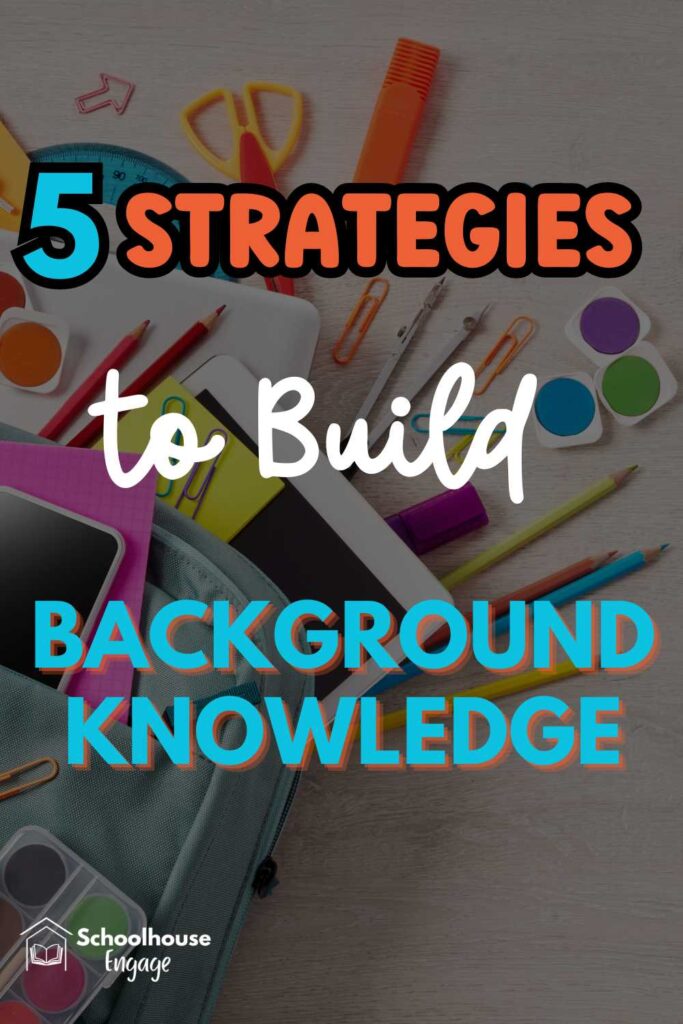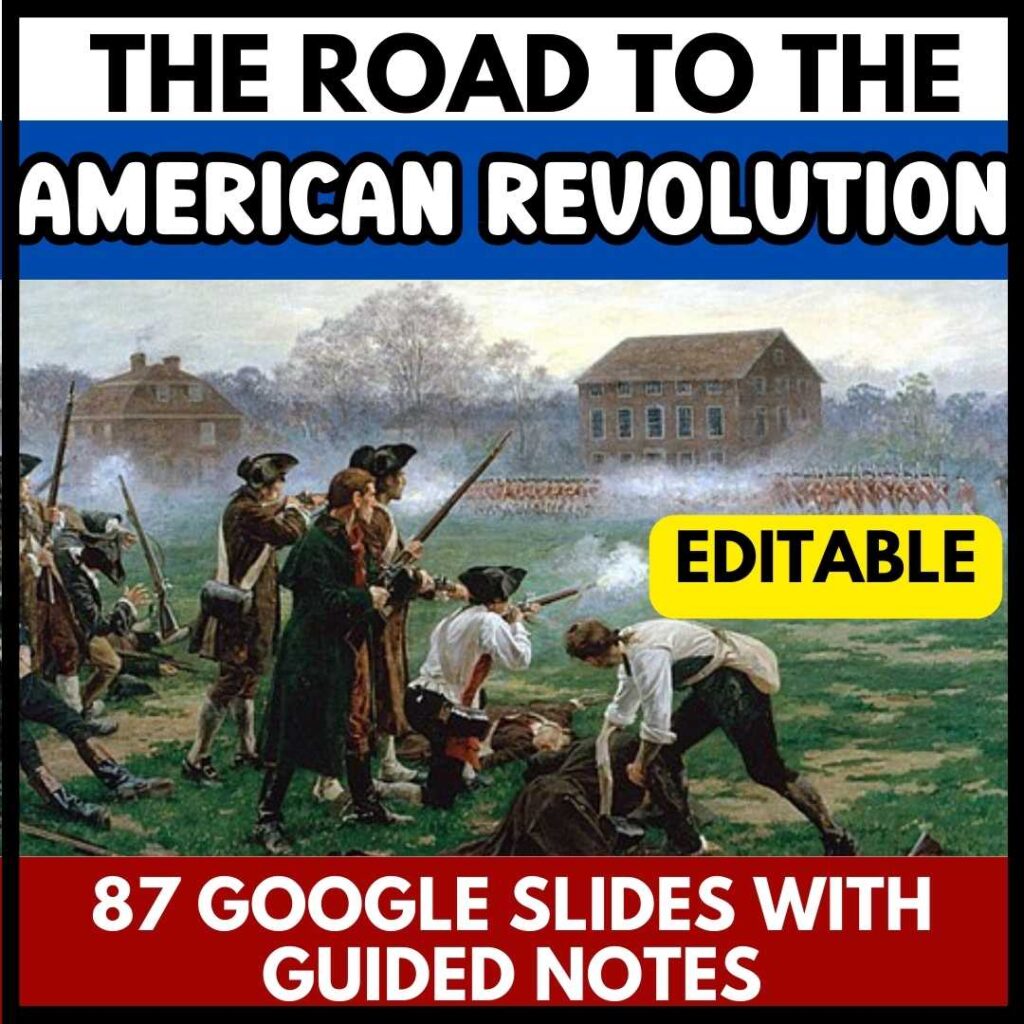When students are reading non-fiction text, their comprehension increases if they have some sort of background knowledge about the topic and are familiar with domain-specific vocabulary. It might feel like you are spoiling what the students are about to read when you activate their background knowledge and frontload vocabulary, but the opposite could not be more true.
The reality is that students have a deeper understanding of what they are reading when they are given background knowledge about a topic. Here are 3 strategies to use in your classroom.

#1 Use Images to Explicitly Teach Vocabulary
If your students are going to read a non-fiction text about Social Studies, build background knowledge and front-load vocabulary with images.
It’s not often that textbook companies will include photos on separate cards so to make vocabulary instruction engaging, create your own in a presentation. Include colorful images, graphics, and primary sources that explicitly teach vocabulary words. Have your students repeat the pronunciation of the words.
Define domain-specific vocabulary words make sure to review the words. Students can define these words in guided notes so that they have the words for future reference.
Short on time? I have Editable Guided Notes and Presentation slides for the Early English Settlements and the Causes of the American Revolution.
#2 Review Vocabulary with a Graphic Organizer
Once you have explicitly taught vocabulary words with images, review the words for the next few days daily when you first begin your lesson. Have students complete a graphic organizer during independent time or for homework so they can apply their understanding of the word.
Have your students:
- Define the word using their own words. They are not allowed to copy the definition from a dictionary. (Does anyone even have dictionaries in the classroom?)
- Copy the sentence from the textbook containing the word, so that students have an understanding of how the sentence should be used.
- Create your own sentence with the vocabulary word. The sentence must have at least 7 words.

#3 Teach with Guided Notes
Guided notes are a great way to keep your students engaged and accountable. Before you dive into any Social Studies or Science topic, you need to teach students key ideas and concepts. The best way is to use presentation slides with guided notes.
While you are teaching your history or science lesson, students are completing guided notes. Most guided notes are fill-in-the-blank since elementary students are not developmentally ready to take notes.
To read more about how to create guided notes in your classroom, click HERE.

#4 Use Videos to Activate Background Knowledge
Nothing compares to showing videos to students when you are teaching a certain topic. It’s a nice change of pace when you turn off the classroom lights and let an entertaining, educational video do the teaching.
There are so many videos to teach background knowledge but here are a few of my favorites:
This is a channel created by Peacock Kids. It has videos containing Colossal questions about anything about the human body to history videos.
These cartoon videos feature Nate and his sidekick robot friend who introduce topics and explain a variety of topics in kid-friendly terms. Moby, the robot, always provides comic relief to very serious academic subjects.
Learn Bright has high-quality videos with a range of educational topics. I like that their videos are short and to the point. Also, they have images of real primary sources and the narrator speaks at a great pace that is easily understandable.

#5 Incorporate Analogies in Your Lesson
Analogies can make difficult concepts attainable for your students. Connect your students’ lives and their experiences to what you are teaching.
Here are some examples:
American Revolution
Imagine your school wanted to change some rules, but instead of teachers listening to your concerns, they ignore you and don’t want anything to change. So you and your friends decided to create a whole new school with its own rules. That’s a bit like what the colonists did when they wanted to break away from British rule.
Westward Expansion
Think of it like a game of Monopoly where players are trying to expand their territory and build houses. In American history, people were moving westward, claiming new territories, and building communities, just like players in a board game.
Civil War
Picture your family arguing over something really important, like who gets to decide the rules for the whole house. The Civil War was like a big family disagreement, but on a national scale, with different states arguing over the rules for the entire country.
The Industrial Revolution
Imagine your favorite video game upgrading from the basic version to a super-advanced version with better graphics, new features, and more challenges. The Industrial Revolution was a bit like that for society, with major advancements in technology, industry, and the way people lived.
The Great Depression
Imagine your school suddenly ran out of supplies, and teachers and many students couldn’t afford lunch. The Great Depression was a bit like a really tough time for the whole country when jobs disappeared, money was scarce, and many people struggled to make ends meet.
Civil Rights Movement
Think about a game where some players have more opportunities and better chances of winning, while others face unfair challenges. The Civil Rights Movement was like people coming together to change the rules of the game so that everyone had an equal chance to succeed.
To sum up, activating your students’ prior knowledge enhances your students’ comprehension, and will make teaching new concepts a whole lot easier. I hope I’ve given you some new ideas that will help your students learn new vocabulary and concepts in Social Studies. You got this! Giselle



